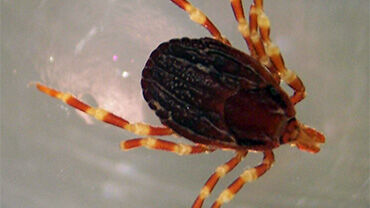Crimean-Congo haemorrhagic fever
Crimean-Congo haemorrhagic fever (CCHF) is disease caused by CCHF virus. It is transmitted by bites from infected ticks or by direct contact with blood or tissues of infected ticks, people and livestock. More than 80% of cases are asymptomatic or mild, with any symptoms appearing within 2-7 days of infection.
Symptoms include:
- high fever
- muscle pain
- dizziness
- abnormal sensitivity to light
- abdominal pain
- vomiting
Among severe cases where hospitalisation is required, around 30% of patients die from the disease. In severe cases, the symptoms can include:
- multiorgan failure
- nosebleed
- bruising
- cytokine storm
Wild animals and pets can carry the virus in their blood for about 2 to 15 days, but do not show any signs of being sick.
In areas where the disease is present, risk groups include outdoor workers, farmers, animal breeders, veterinarians, hunters and health workers. While rare in Europe, cases have previously been reported in in the Balkan and Mediterranean regions.
People can get CCHF from bites by Hyalomma ticks that have the virus or by touching the blood or body parts of infected ticks, animals or sick people. Once ticks get the virus, they can remain infectious throughout their lives.
Sometimes, in hospitals, infections can occur if someone touches the blood or body parts of sick patients, or if medical instruments are not cleaned properly. CCHF in pregnant women is rare, but the risk of maternal and foetal mortality is high.
There is no vaccine against CCHF. Treatment is aimed at supporting the patient and managing their symptoms.
The best ways to prevent the disease are:
- using tick repellents
- wearing protective clothing
- early and correct removal of ticks







